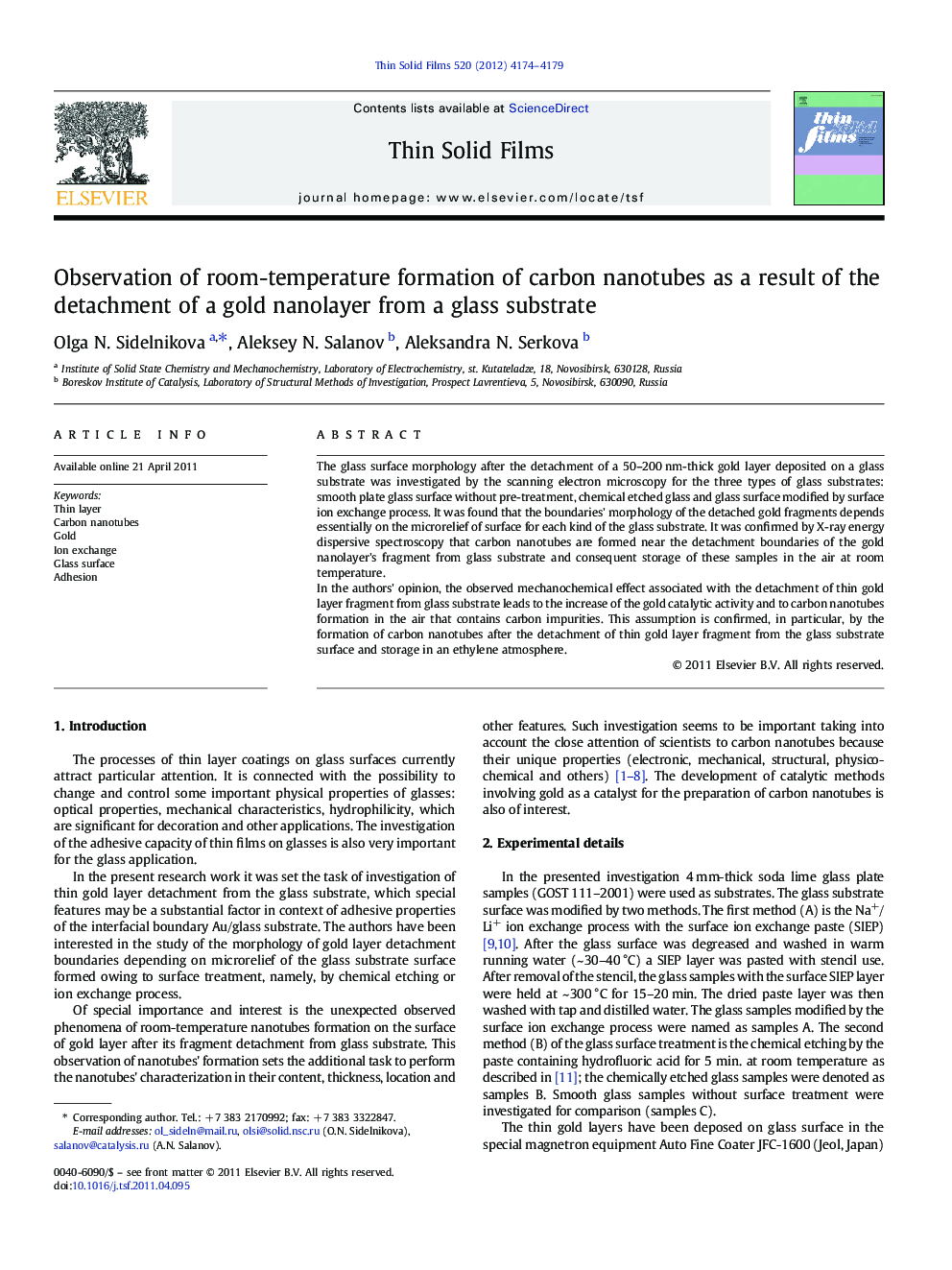| Article ID | Journal | Published Year | Pages | File Type |
|---|---|---|---|---|
| 1667278 | Thin Solid Films | 2012 | 6 Pages |
The glass surface morphology after the detachment of a 50–200 nm-thick gold layer deposited on a glass substrate was investigated by the scanning electron microscopy for the three types of glass substrates: smooth plate glass surface without pre-treatment, chemical etched glass and glass surface modified by surface ion exchange process. It was found that the boundaries' morphology of the detached gold fragments depends essentially on the microrelief of surface for each kind of the glass substrate. It was confirmed by X-ray energy dispersive spectroscopy that carbon nanotubes are formed near the detachment boundaries of the gold nanolayer's fragment from glass substrate and consequent storage of these samples in the air at room temperature.In the authors' opinion, the observed mechanochemical effect associated with the detachment of thin gold layer fragment from glass substrate leads to the increase of the gold catalytic activity and to carbon nanotubes formation in the air that contains carbon impurities. This assumption is confirmed, in particular, by the formation of carbon nanotubes after the detachment of thin gold layer fragment from the glass substrate surface and storage in an ethylene atmosphere.
